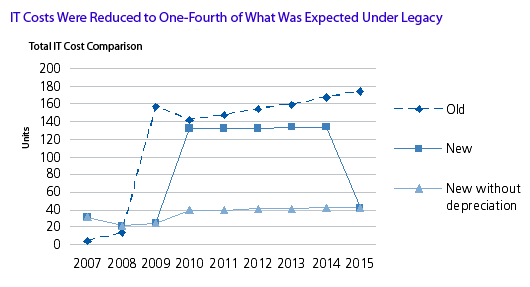Cutting Cost to the Core: How a Leading Asian Bank Saved 75% by Moving to Unix
Abstract
Philippine National Bank was able to cut IT costs by 75% by moving off legacy software and platforms to a new modern infrastructure, while continuing to grow the business at double-digit rates.
In a new report, Cutting Cost to the Core, Celent studies Philippine National Bank (PNB), the former government-owned bank of the Philippines now turned private (nongovernment) bank traded on the Manila Stock Exchange. PNB was able to achieve stunning reductions in IT costs by moving to open systems and modern application software. The bank was running FIS (formerly Kirchman) Bankway International on the IBM mainframe and moved to Oracle Financial Services Software Limited (formerly i-flex solutions) FLEXCUBE running on HP Superdome and HP-UX.
"This kind of cost reduction is a game changer for PNB and its competitors,” says Bart Narter, Senior Vice President of Celent's Banking group and author of the report. “The bank reduced costs across the board: hardware, OS, storage, application software. Other banks would be well-advised to look at their own costs with a clean sheet of paper."
This report examines how PNB came to the decision to move core systems, the selection process that drove them to choose FLEXCUBE, and the implementation and roll out. The report also documents the benefits of the new system: lower total cost of ownership on both the IT and operations sides, better reporting, and better customer experience.

